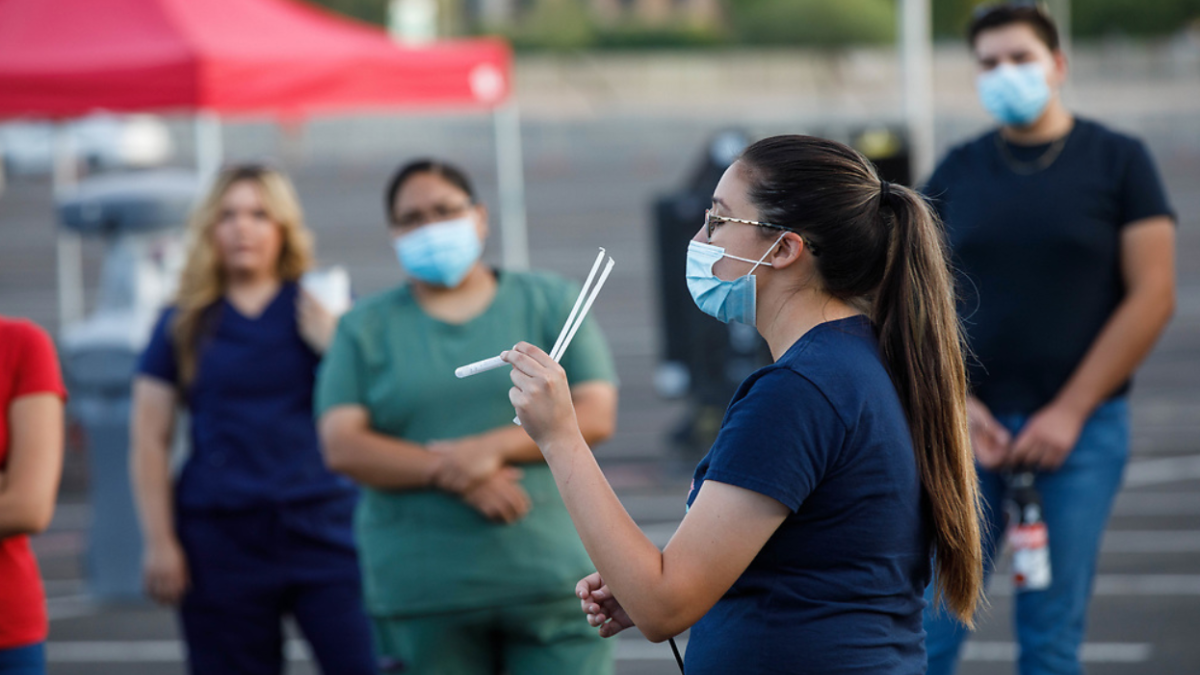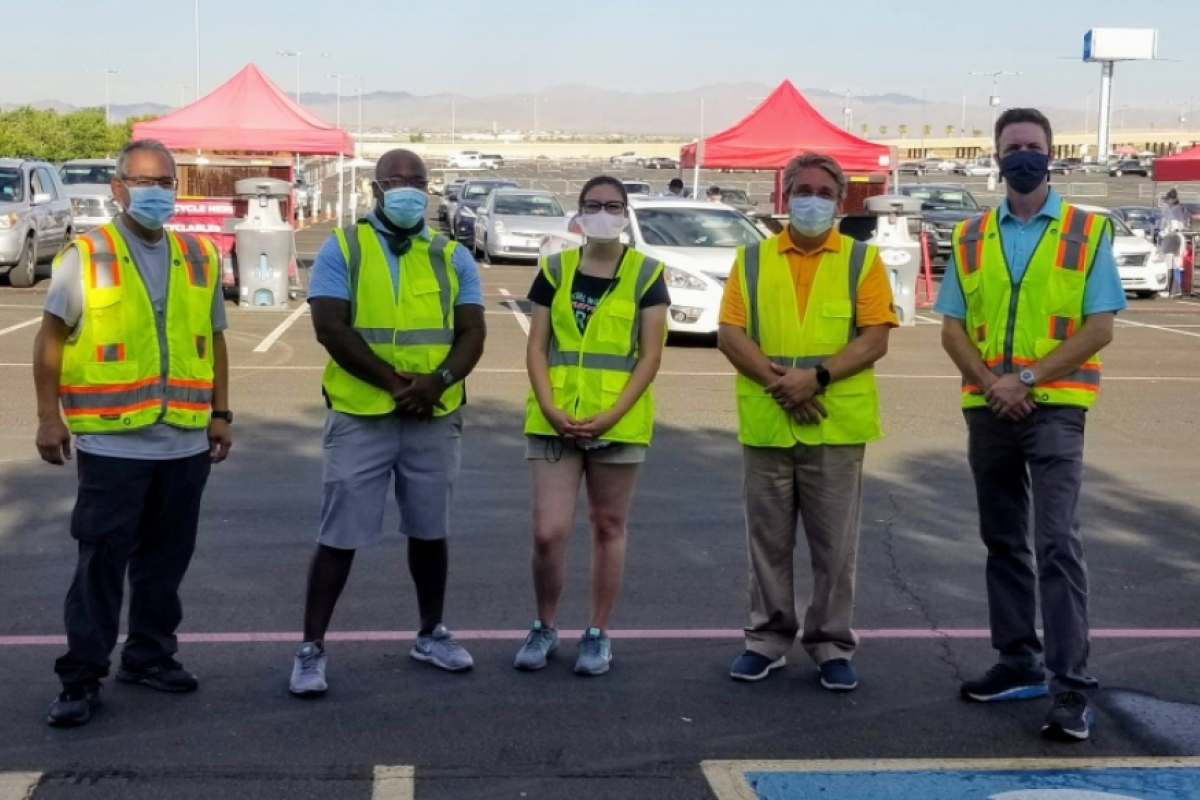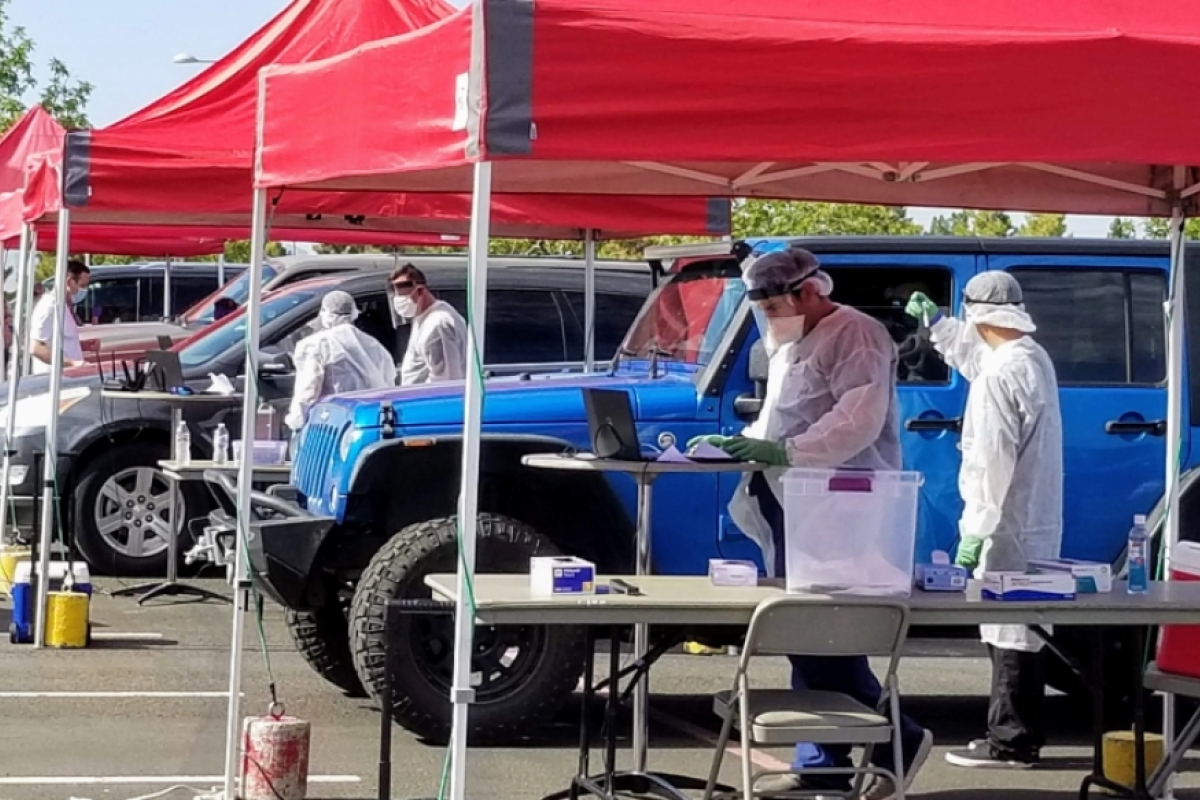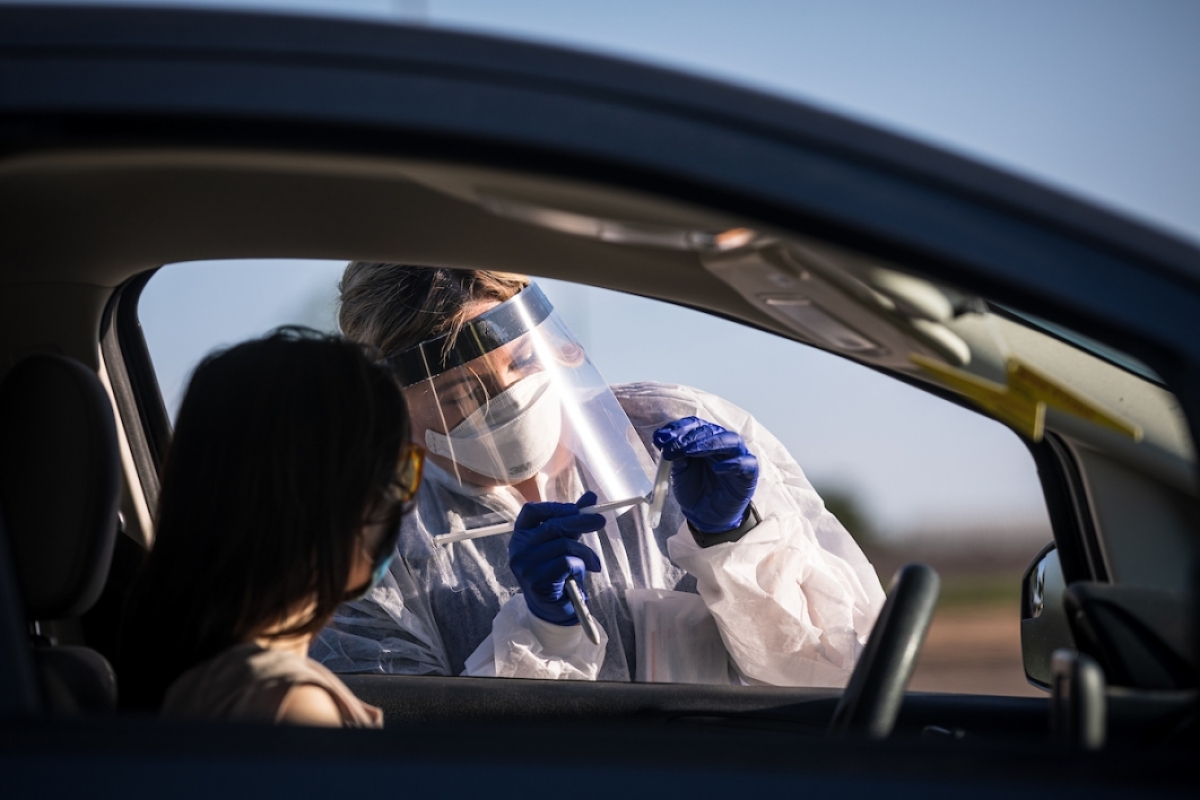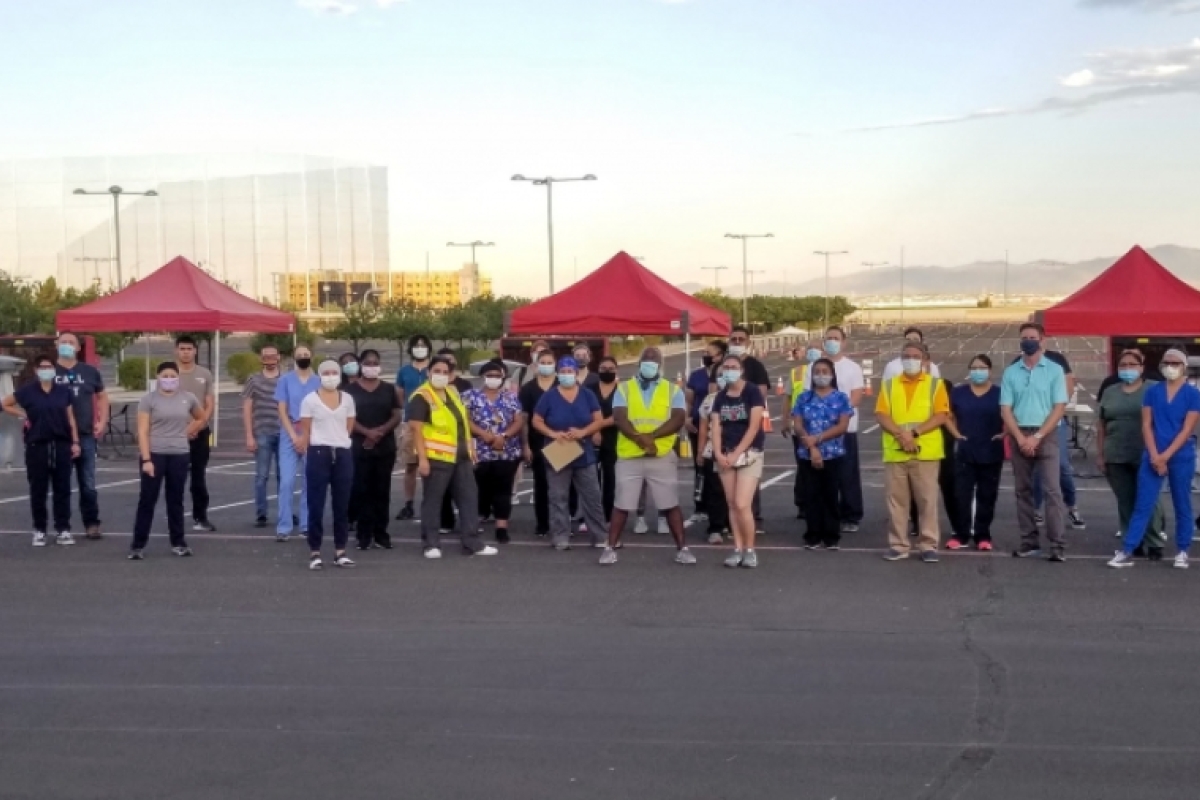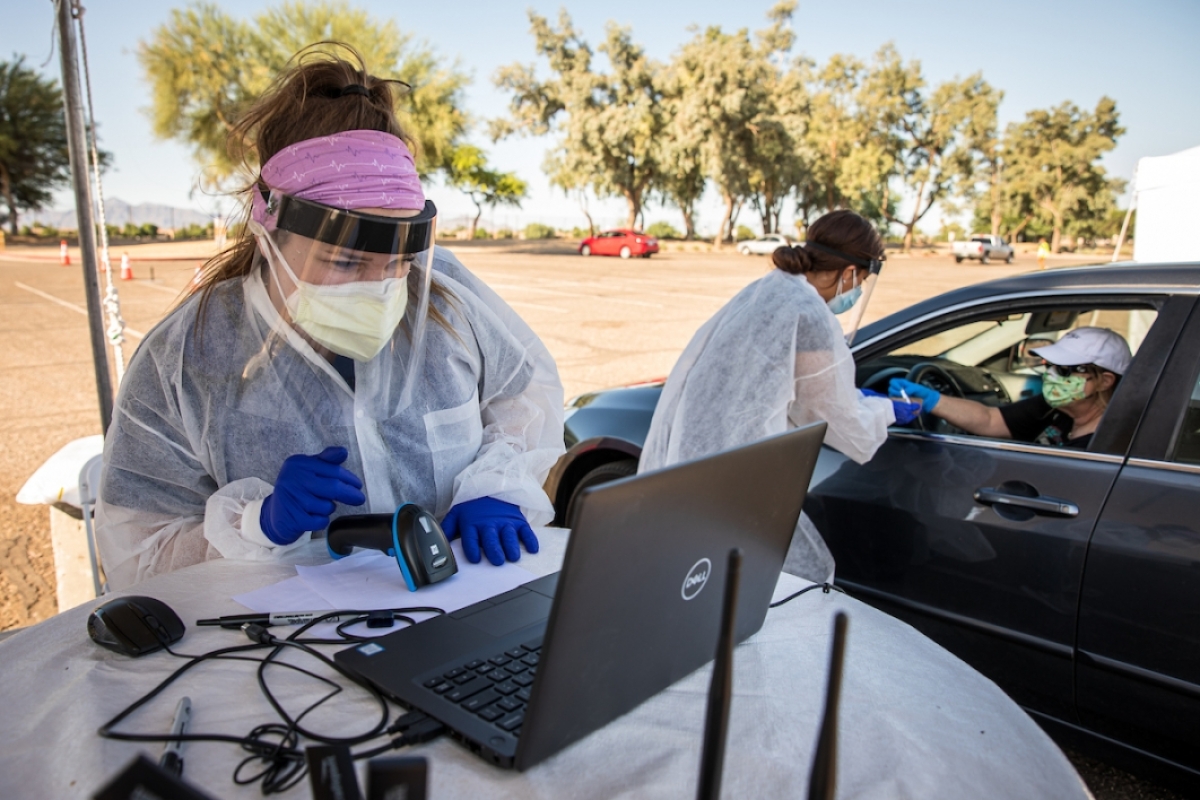Editor’s note: This story is being highlighted in ASU Now’s year in review. Read more top stories from 2020.
As the COVID-19 pandemic began to make a stronghold in Arizona, Arizona State University employees began fighting back — by answering urgent calls for help and, often, by taking on completely new roles.
From CEO to directing site operations, from managing campus events to learning new software and training others how to use it, and from preparing for Homecoming to preparing remote sites for COVID-19 testing, ASU employees are answering the call.
Can you volunteer? Will you assemble a new lab? Can you develop a process for something we’ve never done before? Will you work the front lines and run a COVID-19 testing site?
Despite the challenge of quickly pivoting into new responsibilities, faculty and employees have resoundingly said “yes” — innovating solutions and adapting to incredible demands.
Supporting ASU’s response to the pandemic, Joshua LaBaer’s Clinical Testing Lab at ASU Biodesign Institute started a clinically approved, CLIA-certified COVID-19 testing center. It’s done so with the collective support of an adaptable, dedicated group of faculty, staff, students and volunteers working around-the-clock to create the test and the process by which to administer it.
“We assembled an incredibly talented, dedicated, and hardworking transdisciplinary team from across the university and throughout the community,” said LaBaer, executive director of ASU Biodesign Institute and ASU’s Clinical Testing Laboratory for COVID-19. “I couldn’t be any prouder of the way this group of caring individuals has stepped up to fight the greatest challenge of our time. They are inspirational, selflessly going above and beyond for months on end.”
David Thomas, CEO of ASURE and executive director of the MILO Institute, said a team of people from ASURE who have experience developing standard operating procedures went to work as soon as they got the call.
“We deal with standard operating procedures all the time. So, this is familiar turf for us,” said Thomas. “I got the call on a Saturday morning. On Sunday, we were visiting sites and we executed our first COVID-19 testing site on Wednesday or Thursday the following week. Literally, within one week we stood up the very first test site.” Thomas is now serving as the operations lead for nearly 40 COVID-19 testing sites with as many as 50 people working each one.
Innovating and adapting
Testing sites are spread out across the state, from the Navajo and other Native American communities in northern Arizona to Maricopa County, Pima County and beyond. Community partners including the Arizona Department of Health Services, State Farm Stadium, Tempe Diablo Stadium, Ak Chin Pavilion have joined the effort to provide the public with COVID-19 saliva testing locations, including in Tucson and northern Arizona. While each site presents unique challenges for the events team, the remote sites can be especially difficult to manage.
Before the pandemic, Marcus Jones was running special events for the College of Health Solutions. Now he works with ASU’s partner organizations to teach them how to effectively run their own COVID-19 test sites.
“It’s key to help others who are learning how to set up and run COVID-19 test sites, to also learn how to adapt. And, we need to adapt operations as needed. For example, there’s not a lot of internet access on the reservation for the Colorado River Indian Tribes, but our registration system requires it,” said Jones, assistant director of special projects for the college. “So, I sat down and drew out how this would work, and it came down to using raffle tickets to register everyone in Google forms.”
Initially, LaBaer’s lab developed a drive-thru, nasal swab method to test for COVID-19. But personal protective equipment (PPE) and nasal swabs were in high demand and extremely short supply. So, the group pivoted and developed the state’s first saliva-based COVID-19 test. But to do so, the entire team had to quickly adjust to a new set of operational demands.
Instead of planning events like homecoming and ASU Open Door, Breanna Carpenter now gets up every morning at 2:30 a.m. to be at a saliva-testing site early enough to set everything up before the clinical crew arrives at 6 a.m. for daily training. She gets inventory and PPE ready, infrastructure set up, and food, water and ice packs set out.
“If I have skills or experience that I can contribute to being part of the solution, that’s what my call is. That’s how I should answer. Things will come up that we don’t anticipate, and we just have to respond to them with accurate, safe, quick, on-your-feet solutions,” said Carpenter, events coordinator with Watts College of Public Service and Community Solutions. “We have a responsibility as a university to be responsive to these things and it’s actually been incredible to see all the ways in which ASU has done so. It has taken just about everyone in the university. When we’re in a crisis like this, it takes everyone to get through it,” she said.
That kind of response has enabled the group to successfully facilitate tens of thousands of COVID-19 tests, with results arriving typically within 48 hours.
“So, those seamless sites of 2,200 tests in a four-hour shift is not by chance. It’s by working many hours, days in advance to be sure we can,” said Kerri Robinson, senior director of Biodesign Institute. “I’m buckled in, tightening my seatbelt. I couldn’t do what I do without all these talented people around me. We’re standing there together, locked arm in arm, and trying to work together to get this done. Everyone is so willing to help accomplish things in fractions of time.”
The team has responded in innovative ways — stepping into critical leadership roles and problem-solving at a rapid rate. They’ve developed multiple testing models, including drive-through, walk-up, parking-deck and dispersed. And, they’ve moved into a HIPPA compliant software that tracks a participant’s test.
“I’m helping our partners move into a new software program called Point and Click and it’s often their first time using this software,” said Alma Douglas, a senior events coordinator with ASU Knowledge Enterprise. “I do a site visit with the partners and make sure everything is up and running. Then the software makes an appointment, tracks a QR code for the participant and integrates it into the lab’s efforts.”
Like others on the team, Douglas’ days are long, but she’s dedicated to helping others.
“I know if someone is having issues with the software and they’re emailing me that they need to get tested to go back to work, I’ll answer emails and be helping people at 10 o’clock at night. It’s meaningful to know that we need to get people tested and if that means I’m on call, I’m on call,” she said. “We went from planning seminars to saving lives.”
Not only have ASU employees, volunteers and students pivoted, but the team is constantly adapting to the public's needs for convenience and safety. The testing experience ASU created is quick and noninvasive. People can stop in and be tested in as little as 20 minutes, depending on the site. The convenient setup makes getting tested and tested often a breeze for Valley residents.
Being part of the solution
Since February, the SARS-CoV-19 virus spread rapidly throughout the U.S. In Arizona, infection rates soared following the reopening of the state in May. While infection rates are finally beginning to slow in the state, the continued success of ASU’s COVID-19 test sites means saving lives.
It also means that ASU and the greater community can take steps to begin moving forward, even though the virus is likely to be around for a long time to come.
“There’s a tremendous amount of anxiety around the fact that we are in this pandemic with this invisible bug that doesn’t care about boundaries. It’s out to do its thing. Right now, the best response we have is knowledge testing,” said Thomas. “If I know whether I have the virus, I can plan my days. So, just knowing, gives people hope. We’re giving people the ability to live their live in a quasi, not normal way, but we’re giving people the ability to do things they love to do. I think the test site is a symbol of hope for our community.”
And having hope is as important as being part of the solution.
Top photo: Instead of planning events like homecoming and ASU Open Door, Breanna Carpenter now gets up every morning at 2:30 a.m. to be at a saliva-testing site early enough to set everything up before the clinical crew arrives at 6 a.m. for daily training.
More Science and technology

ASU professor breeds new tomato variety, the 'Desert Dew'
In an era defined by climate volatility and resource scarcity, researchers are developing crops that can survive — and thrive — under pressure.One such innovation is the newly released tomato variety…

Science meets play: ASU researcher makes developmental science hands-on for families
On a Friday morning at the Edna Vihel Arts Center in Tempe, toddlers dip paint brushes into bright colors, decorating paper fish. Nearby, children chase bubbles and move to music, while…

ASU water polo player defends the goal — and our data
Marie Rudasics is the last line of defense.Six players advance across the pool with a single objective in mind: making sure that yellow hydrogrip ball finds its way into the net. Rudasics, goalkeeper…


